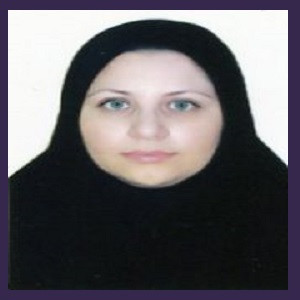خانم دکتر آسیه احصایی(Cyclopentolate versus tropicamide on anterior segment angle parameters with optical coherence tomography in three refractive groups)

Cyclopentolate versus tropicamide on anterior segment angle parameters with optical coherence tomography in three refractive groups
Background and Aim: This study aims to compare the effects of cyclopentolate and tropicamide on anterior segment angle parameters using Optical Coherence Tomography (OCT) in three refractive groups in adults.
Methods: Sixty healthy individuals were recruited and assigned into three refractive groups according to inclusion criteria. At baseline visit, anterior segment angle parameters were measured using anterior segment OCT in the right eye. All measurements were repeated at two separate visits, one week apart, after administration of tropicamide 1% and cyclopentolate 1% at similar conditions. Anterior segment angle parameters were recorded at temporal areas (180 degrees).
Results: Sixty participants (29 men and 31 women, age: 27.82±4.71 years) completed the experiment. Baseline mean spherical equivalents were +1.52±1.20D, -0.04±0.33D and -1.91±0.91D in hyperopic, emmetropic and myopic groups, respectively. No statistically significant differences were found between tropicamide and cyclopentolate for all angle parameters in three refractive groups. Both drops exhibited an increase in all parameters in three refractive groups. Analysis between refractive groups revealed that a more hyperopic refraction was associated with less TIA, AOD and ACD parameters in baseline, after tropicamide and cyclopentolate instillations.
Conclusion: Topical application of cycloplegic eye drops in healthy individuals lead to significant increment of ACD and anterior segment angle parameters, regardless of refractive status. Moreover, lower values of ACD and anterior segment angle parameters in hyperopic individuals after administration of cycloplegic drops should be taken into account during biometric measurement and phakic IOL implantation. Due to shorter effect and recovery time and less ocular/systemic reaction of tropicamide versus cyclopentolate, tropicamide could be a recommended cycloplegic agent for diagnostic and therapeutic procedures.
Asieh Ehsaei1 *, Nasser Shoeibi 2 , Nasrin Moghadas Sharif 3 , Maryam Heydari 4 , Negareh Yazdani 3 , Somayeh Ghasemi-moghaddam 4
- 1.Department of Optometry, School of Paramedical Sciences, Mashhad University of Medical Sciences, Mashhad, Iran 2.Refractive Errors Research Center, Mashhad University of Medical Sciences, Mashhad, Iran
- Eye Research Center, Mashhad University of Medical Sciences, Mashhad, Iran
- 1.Student Research Committee, Mashhad University of Medical Sciences, Mashhad, Iran 2.Department of Optometry, School of Paramedical Sciences, Mashhad University of Medical Sciences, Mashhad, Iran
- Department of Optometry, School of Paramedical Sciences, Mashhad University of Medical Sciences, Mashhad, Iran